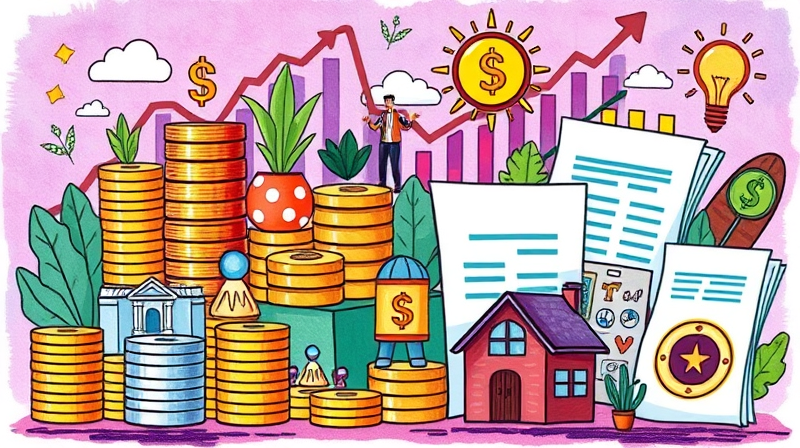
China’s 2025 economic trajectory has generated considerable debate among analysts and policymakers. After the sharp slowdown of recent years, growth has seemingly regained momentum, yet beneath the surface lies a recovery that is anything but straightforward.
The first quarter’s 5.4% year-on-year expansion surprised many, surpassing the official 5% target. However, this rebound masks a fragile and uneven recovery characterized by staggering contrasts between robust consumer demand and stuttering industry output. As projections trend downward for the remainder of the year, there is growing concern that without decisive action, growth could slip closer to 4% by year-end.
The most prominent feature of China’s post-pandemic rebound is the divergence between consumption and industrial activity. While shoppers have returned to malls and online platforms in droves, factories and exporters face headwinds from weak global demand.
This split underscores the limits of relying solely on consumption to buoy overall growth and highlights the need for a more balanced revival.
May’s retail sales surged 6.4% year-on-year, a welcome acceleration from April’s 5.1%. Big-ticket categories—like household appliances (+53.0%) and communication devices (+33.0%)—benefited from generous trade-in programs. “Eat, drink, and play” segments, including catering and sports, recorded double-digit gains, underpinning the resilience of domestic demand.
Targeted subsidies and trade-in incentives fuel consumption by encouraging upgrades and new purchases. Yet, economists caution that such measures may have reached their natural ceiling. Without broad-based income support, spending could taper off, leaving retail as a short-lived engine of growth.
Manufacturing activity has hit a lull. The NBS manufacturing PMI fell to 49.1 in May, signaling contraction for the first time in months. Despite industrial output ticking up to 6.2% growth in select periods, factories face persistent challenges.
The property sector remains a significant drag. Continuing declines in home prices erode household wealth and consumer confidence. Fixed-asset investment has been slow to recover, reflecting muted business sentiment and the hesitancy of private developers to embark on new projects.
The Chinese government has adopted a cautious mix of fiscal and monetary measures to steer the economy. Rather than a sweeping infrastructure blitz, authorities have focused on targeted stimulus measures for households via consumption coupons and trade-in rebates.
This calibrated approach aims to limit debt accumulation while propping up demand. However, the trade-off between boosting consumption and maintaining fiscal discipline may leave policymakers with limited levers to steer growth higher.
China’s export sector, once the bedrock of its economy, now grapples with multiple external shocks. Renewed US tariffs and softer global demand have cooled overseas orders. A mildly depreciated yuan has provided some relief, but cannot alone offset the impact of a fragmented world economy.
In response, Beijing is diversifying trade partnerships, pursuing deals with emerging markets in Southeast Asia, Africa, and Latin America. While diversification can mitigate risk, it cannot fully replace the scale of Western markets, which remain crucial for Chinese exporters.
Despite headline growth figures, pricing pressures remain subdued. Consumer price inflation has lagged expectations, and some sectors face outright deflation. Weak demand and high precautionary savings have blunted the effect of monetary stimulus on prices.
Analysts warn that persistent deflationary pressures may stifle investment and delay consumption decisions, as households and businesses opt to wait for lower prices. Overcoming this inertia will require structural reforms to boost productivity and lift long-term inflation expectations.
Improvements in employment have been modest. While overall jobless rates have inched down, youth unemployment remains stubbornly high. With millions of graduates entering the workforce annually, underemployment and precarious work have become pressing social concerns.
The lack of vibrant job growth dampens wage prospects for younger workers and can erode consumer confidence. Without a robust labor market, household incomes may stagnate, further constraining the recovery’s breadth.
Beyond cyclical factors, China faces profound structural challenges. An aging population, slowing productivity growth, and a legacy of debt-fueled expansion all weigh on long-term potential. To pivot towards a productivity-led expansion for high-quality growth, deeper reforms are essential.
Key policy priorities include:
As China navigates the remainder of 2025, the interplay of domestic policy choices and external forces will be critical. The economy’s resilience in the face of these challenges will hinge on both short-term stimulus calibration and the depth of long-term structural reform.
While the road ahead may be uneven, a clear-eyed assessment of strengths and weaknesses offers a roadmap for a more sustainable and inclusive recovery. For observers and participants alike, the unfolding story of China’s economy in 2025 is a reminder that growth is not merely about numbers, but about the underlying capacity to innovate, adapt, and thrive.
References













